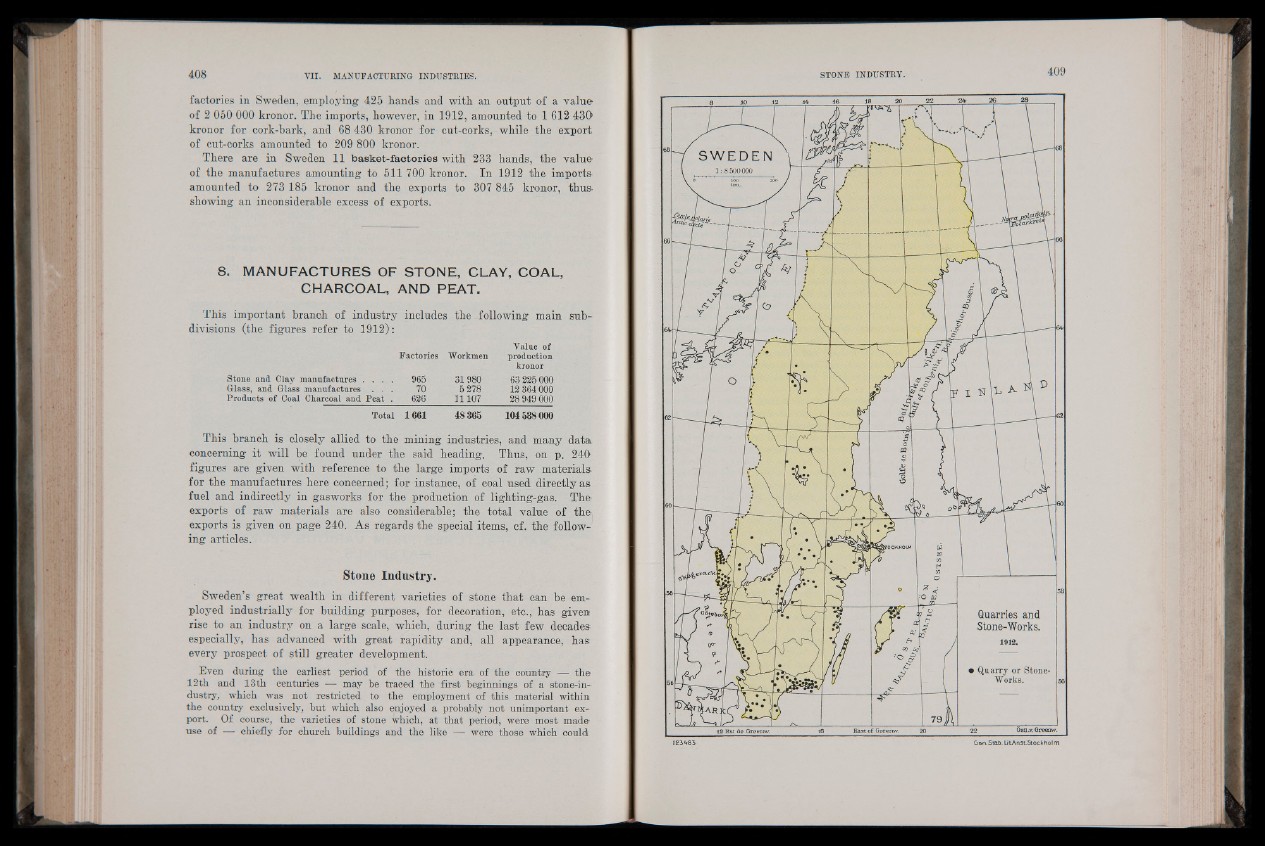
factories in Sweden, employing 425 hands and with an output of a value-
of 2 050 000 kronor. The imports, however, in 1912, amounted to 1 612 430
kronor for cork-bark, and 6 8 430 kronor for cut-corks, while the export
of cut-corks amounted to 209 800 kronor.
There are in Sweden 1 1 basket-factories with 233 hands, the value
of the manufactures amounting to 511 700 kronor. In 1912 the imports
amounted to 273 185 kronor and the exports to 307 845 kronor, thus,
showing an inconsiderable excess of exports.
8. MANUFACTURES OF STONE, CLAY, COAL,
CHARCOAL, AND PEAT.
This important branch of industry includes the following main subdivisions
(the figures refer to 1912):
Value of
Factories "Workmen production
kronor
Stone and Clay manufactures . . . . 965 31980 63225000
G-lass, and Glass manufactures . . . 70 5 278 12 364 000
Products of Coal Charcoal and Peat . 626 11107 28 949 000
Total 1661 48365 104538000
This branch is closely allied to the mining industries, and many data
concerning it will be found under the said heading. Thus, on p. 240
figures are given with reference to the large imports of raw materials-
for the manufactures here concerned; for instance, of coal used directly as
fuel and indirectly in gasworks for the production of lighting-gas. The
exports of raw materials are also considerable; the total value of the.
exports is given on page 240. As regards the special items, cf. the following
articles.
Stone Industry.
Sweden’s great wealth in different varieties of stone that can be employed
industrially for building purposes, for decoration, etc., has given
rise to an industry on a large scale, which, during the last few decades
especially, has advanced with great rapidity and, all appearance, has
every prospect of still greater development.
Even during th e earliest period of th e historic era of the country — th e
1 2 th and 13th centuries — may be traced th e first beginnings of a stone-in-
dustry, which was no t restricted to th e employment of this material within
th e country exclusively, bu t which also enjoyed a probably not unimportant export.
Of course, th e varieties of stone which, a t th a t period, were most made
use of — chiefly for church buildings and th e like — were those which could